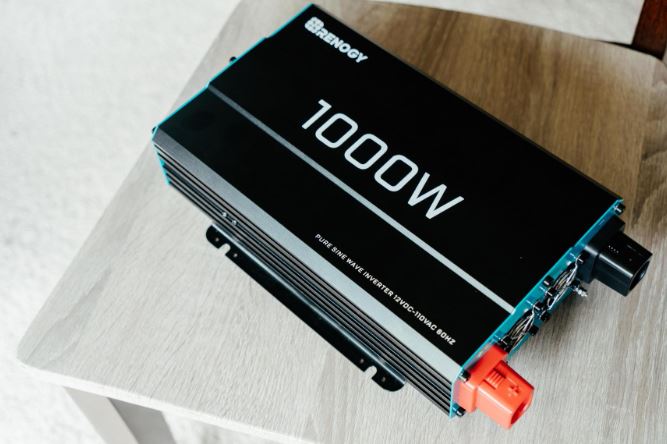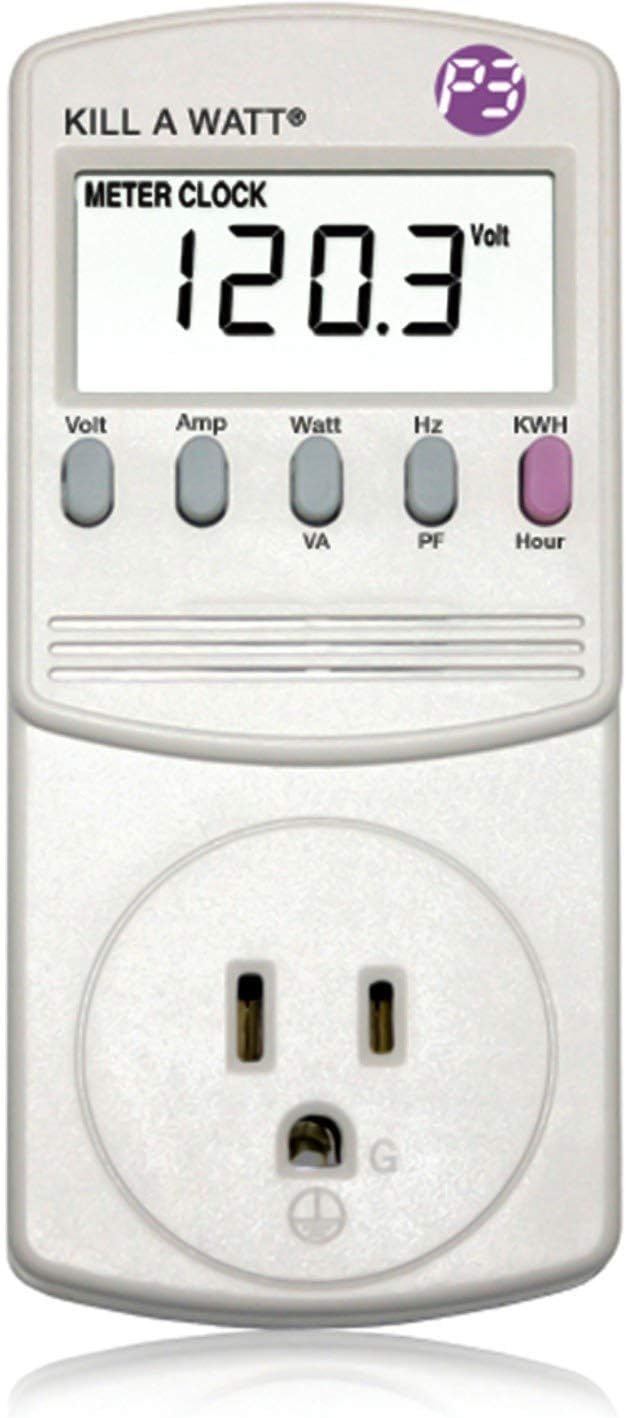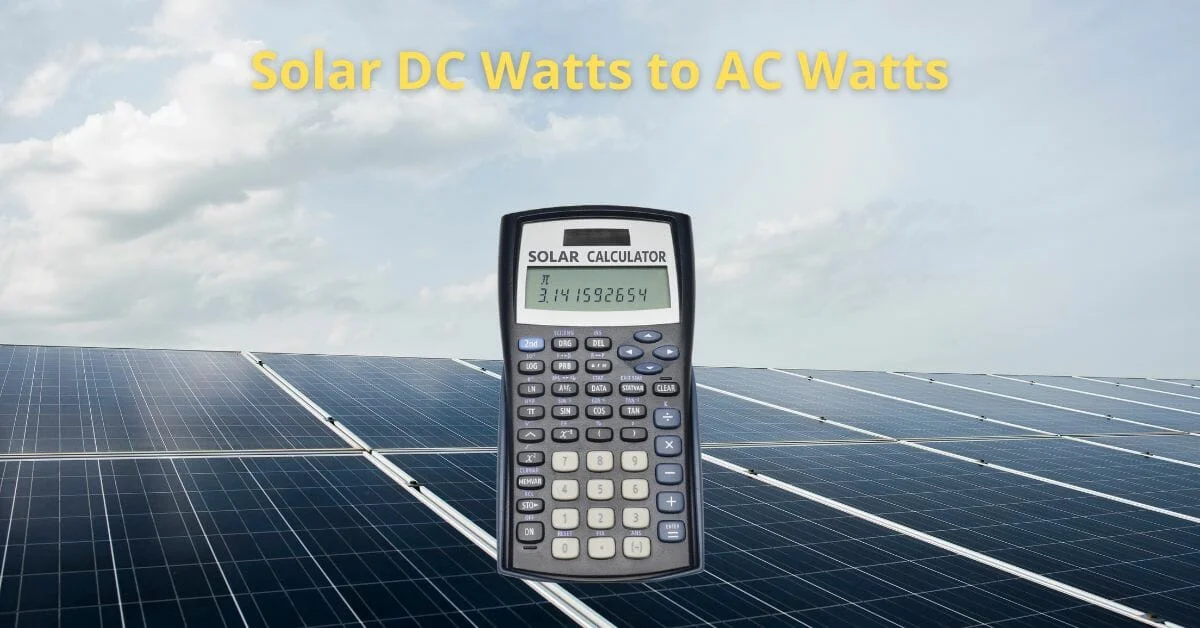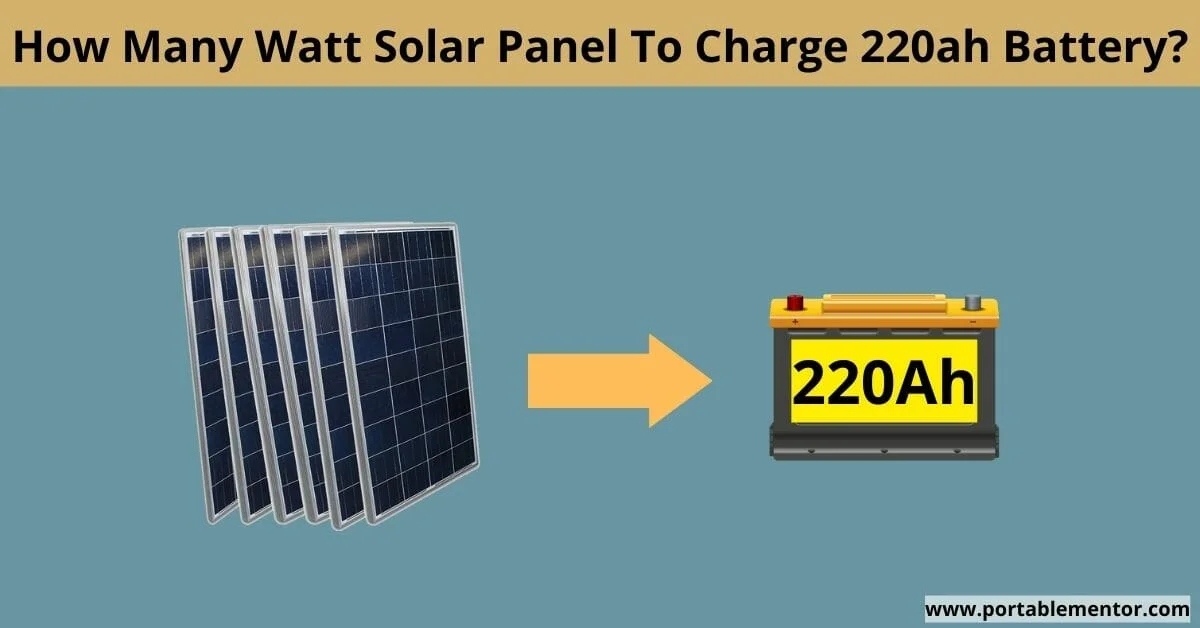If you've just got your hands on a 1000-watt inverter, you might be curious about the variety of appliances it can support. While it might seem like a simple calculation that it can manage appliances up to a combined 1000 watts, the actual scenario is a bit different.
This guide will help you understand "what can 1000-watt inverter run or power" along with examples.
Understanding the 1000-Watt Inverter

A 1000-watt inverter is a device that takes direct current (DC) energy — typically from a battery or solar panel — and transforms it into alternating current (AC) energy, which is the type of electricity most commonly used in household appliances.
When we refer to a "1000-watt inverter", the "1000-watt" part refers to the inverter's capacity or the amount of AC power (in watts) it can supply continuously. But what does this mean in real-world — how many appliances it can power? Let's find out!
what can a 1000 watt inverter run?
You might be wondering why we suggest limiting the load to 800 watts when the inverter has a capacity of 1000 watts. That's a fair question! The answer has to do with preserving the life of your inverter.
To ensure the long-term durability of the inverter, it is advisable to maintain a 20% buffer in terms of capacity. That's precisely why we suggest adhering to the 800-watt. By doing so, you not only provide a safety margin but also extend the overall lifespan of your inverter.
surge power requirement of your load should not surpass 2000 watts
A 1000-watt inverter usually means the amount of power it can provide 'continuously'. However, there's another important factor you shouldn't ignore — the maximum surge rating. This rating is crucial for determining what devices you can actually run with your inverter.
So, what is surge power? It's a brief, intense burst of energy that appliances need when they're starting up. This spike in power lasts only a few seconds but is a crucial factor in the operation of many devices.
Here's a list of appliances that require surge power:
- Air Conditioners
- Refrigerators
- Freezers
- Washers
- Dryers
- Dishwashers
- Electric Ranges and Ovens
- Microwaves
- Garage Door Openers
- Sump Pumps
- Furnaces
The great news is --- most inverters are engineered to handle surge power — typically supply around 2 to 3 times their rated capacity in a surge. For example, my Renogy 1000W inverter can manage a surge rating of up to 2000 watts.
Therefore, your 1000-watt inverter can likely generate a short burst of power up to around 2000 watts (but always check the label to confirm).
So, whether you're looking to power multiple smaller devices or a single large appliance with your 1000W inverter, don't forget to check the surge power requirements on the appliance's label. And make sure that the surge power rating of your 1000W inverter aligns with the surge power requirement of your load.
load calculation for 1000 Watt inverter
To figure out the power rating of your appliances, follow these uncomplicated steps:
- Start by searching for the nameplate or label of the appliance. It's usually positioned at the back or bottom of the device. For larger appliances, you might find the label inside the door or along the frame.
- The power rating is typically expressed in 'watts' (W). If you don't see it directly, the label might indicate volts (V) and amps (A). If that's the case — you can derive the wattage by multiplying the voltage with the amperage (W = V x A).
- Add up the total load. If you wish to power some appliances together — add up their wattage capacity. This information will play a key role in figuring out whether your 1000-watt inverter can handle the total power demand of all the appliances together or if it can handle the power demand of each appliance individually.
For an even simpler approach — consider using a watt meter. All you need to do is plug your device into this handy tool, and it takes care of the rest. No need for complex calculations or dealing with volts and amps. It simplifies the process of understanding the power needs for your 1000-watt inverter.
- Monitor your electrical usage by day, week, month, or year
- Large LCD display counts consumption by the kilowatt-hours
For example — you can power the following devices together with 1000 Watt inverter.
- Laptop - 50W
- TV - 50W
- RV Fridge - 60W (160-watt surge wattage)
- 3 LED lights - 60W
- Desktop Computer (Standard): 200W
- Sewing Machine: 100W
- Straightening Iron: 75 watts
The total load will be 615 watts, which can be easily run by 1000 watt inverter.
Reminder: The combined continuous load should not exceed 800 watts and the surge wattage should remain below 2000 watts.
what can a 1000w inverter run?
Here are some common household appliances that can be powered by 1000 watt inverter:
| Appliance | Average Power Consumption (Watts) |
|---|---|
| Blender | 500 Watts |
| Can Opener | 150 Watts |
| DVD Player | 15 Watts |
| TV – LCD | 150 Watts |
| Satellite Dish | 25 Watts |
| Stereo Receiver | 450 Watts |
| Video Game Console | 150 Watts |
| Lights | 30 Watts |
| Compact Fluorescent Bulb (20 Watt) | 22 Watts |
| Compact Fluorescent Bulb (25 Watt) | 28 Watts |
| Stand Mixer | 300 Watts |
| Radiotelephone – Receive | 5 Watts |
| Modem | 7 Watts |
| Router | 7 Watts |
| Smart Phone – Recharge | 6 Watts |
| Tablet – Recharge | 8 Watts |
| Table Fan | 10-25 Watts |
| Tower Fan | 60 Watts |
| Sewing Machine | 70-100 Watts |
| Straightening Iron | 75-300 Watts |
| Tablet Computer | 5-10 Watts |
| TV (19″ color) | 40-100 Watts |
| LCD Monitor | 100 Watts |
Note: these are average wattages — actual wattage can vary based on the specific model and usage conditions.
what can I run off a 1000w inverter? — Pure vs. Modified Sine Wave Inverter
There are mainly two kinds of inverters: pure sine wave inverters and modified sine wave inverters.
A pure sine wave inverter generates electricity closely resembling the consistent and seamless waveform of the electricity that’s supplied by your utility grid. This type of inverter provides clean and reliable power, making it ideal for sensitive electronic devices.
Here are some examples of appliances that require a 1000-watt pure sine wave inverter:
- Computers
- Laptops
- Printers
- Audio/video equipment
- Medical monitors
- Power tools (like drills, grinders, and saws)
- Refrigerators
- Air conditioners
- Washing machines
- Microwave ovens
- Coffee makers
- Blenders
- High-end audio systems
- Amplifiers
- Mixers
- Studio equipment
A modified sine wave inverter is a more basic version that still serves the purpose of powering simple electronics and appliances. It's crucial to note, though, that the waveform created by a modified sine wave inverter isn't as smooth as that produced by a pure sine wave inverter.
This less refined waveform can lead to harmonic distortions, which may sometimes cause complications with specific devices. You might think of a modified sine wave as a cover band doing their best to perform a hit song, but occasionally missing a note or two.
The Importance of Battery and Cable Size
The performance of your 1000-watt inverter isn't dictated solely by its wattage. The battery's size and the types of cables you use can also greatly impact how it functions.
what's the optimal battery size for a 1000-watt inverter?
To fully power a 1000-watt inverter for about 5 hours, you'll require approximately two 12v 200ah lithium batteries.
The perfect battery size for your 1000-watt inverter depends on how long you plan to run your appliances.
Here are the steps to identify the ideal battery size for your inverter:
- Sum up the wattage of all the appliances you plan to operate.
- Multiply this total wattage by the number of hours you need them to run.
- Then, divide the result by 12 — for a 12v battery system, by 24 — for a 24v system, or by 48 — for a 48v system. For a 1000-watt inverter, a 24v battery system usually makes the most effective choice.
For example, if you intend to operate a 500-watt appliance for a duration of 3 hours, you would require a minimum battery capacity of 12 volts and 120 amp-hours (Ah).
Related post: How many batteries for a 1000W inverter?
Cable size for a 1000-watt inverter?
For a 12v 1000-watt inverter, you'll require a cable of 2/0 AWG wire size, while for a 24v 1000-watt inverter, a 2 AWG wire size is needed.
Below is a chart showing what wire size you'd need for your inverter with varying voltages.

Optimizing 1000-watt Inverter Performance
To optimize your inverter's performance follow the below tips:
- Align the DC Input Voltage with Your Battery: The DC input voltage of your inverter should correspond with the voltage of your battery. If your inverter is designed for 12 Volts or 24 Volts, you need to ensure your battery aligns with these specifications.
- Be sure to correctly connect the positive (+) and negative (-) electrodes between the inverter and battery. For a stable and efficient energy transfer, it's essential to use a thick and suitably sized connection line.
- Set your inverter in a dry, cool, and well-ventilated location. Ensure that you position the inverter away from objects that could obstruct airflow and maintain a distance of approximately 20 cm from any surrounding items. It's recommended to avoid environments with temperatures above 40℃ (104℉).
- Prior to connecting any devices to your inverter, ensure that the inverter casing is appropriately grounded. This can prevent potential electric shocks, offering protection for both you and your devices.
By following these tips, you should be able to run a 1000-watt inverter on a battery with optimized performance.
1000W inverter Uses: FAQ's
Conclusion
A 1000-watt inverter is a handy piece of equipment capable of energizing a variety of household electronics — including refrigerators, microwaves, and televisions. To prevent overburdening the inverter, it's essential to keep the combined wattage of all appliances at around 800 watts.
Furthermore, it's critical to comprehend the concept of power surges and ensure your appliances align with the inverter's surge power ratings.
Identifying the power rating of appliances, choosing the correct battery size (for instance, three 12v 200ah lithium batteries), and using the appropriate cable size are all crucial for achieving the best performance from your inverter. Each of these aspects has been thoroughly explained in this guide.
If you have any further questions, don't hesitate to contact us or LEAVE A COMMENT. Thank you!



